A painting is, by definition, a still image; however, it is one that is capable of displaying a great range of motion should the artist wish to do so. When composing a piece, the artist can choose whether to depict a still scene or portray life in full motion, with very different results even when the scene is, at heart, quite similar.
Indeed, it is quite possible that motion can be present even in compositions which, at first glance, appear to be quite unmoving, using a subtle sense of movement which enhances the piece when perceived.
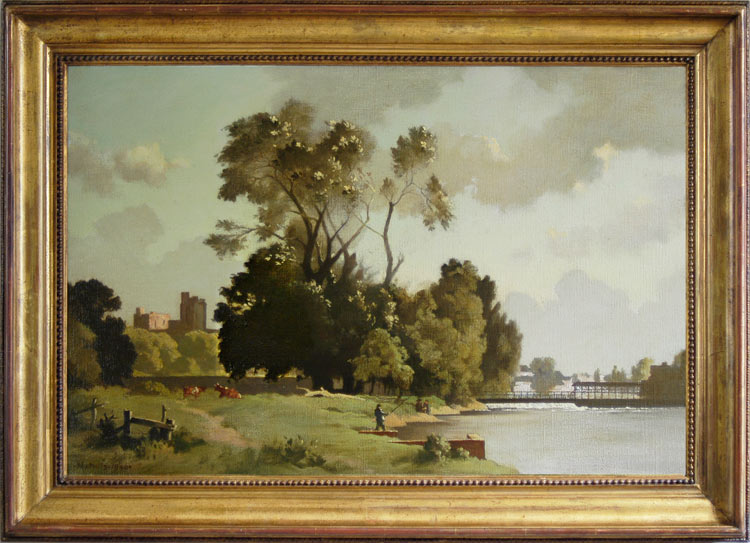 Bertram Nicholls, The weir at Windsor
Bertram Nicholls, The weir at Windsor
At first glance, The weir at Windsor by Bertram Nicholls may appear to be a serene and unmoving landscape, however by examining the details you can see motion throughout the composition. At the right, the titular weir spills a tightly-managed fury of white water, and in the centre foreground a fisherman is seen standing braced against the tug of his line. The trees which dominate the piece seem to sway in a rustling breeze, which at the same time sends the grey and white clouds scudding across the sky.
In other pieces, the motion is more palpable; a central aspect of the composition itself.
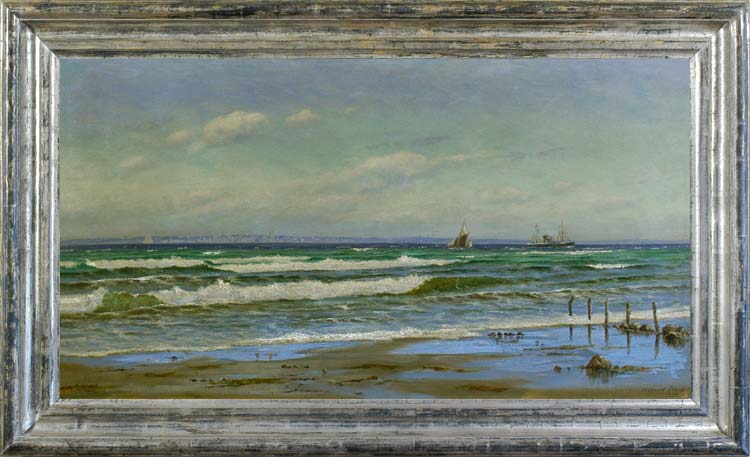 Alfred Olsen, Shipping along the coast
Alfred Olsen, Shipping along the coast
Shipping along the coast, by the Danish artist Alfred Olsen, is a far more immediately dynamic kind of scene; the motion of the waves is more noticeable than even the eponymous ships. The breaking of the waves upon the shore is so expertly detailed that one can almost smell the brine. This active and forceful sea is offset by the calmer expanse of the sky, yet there is motion here too, as the clouds stretch across the piece, driven by the same winds that move the ships.
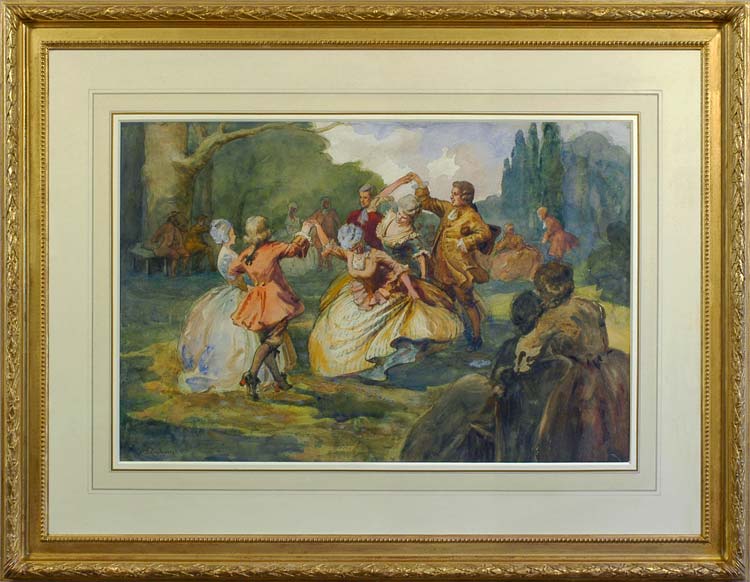 Albert Ludovici, Jr. Monsieur Coulon’s dancing class
Albert Ludovici, Jr. Monsieur Coulon’s dancing class
In Monsieur Coulon’s dancing class, the artist Albert Ludovici Jr portrays the motion of the dance with the sweep and swirl of the ladies’ dresses and the varied positions of the figures. It is a spontaneous composition, full of the moment and almost ready to dance off the canvas. This sense of life is enhanced by the bright, lively colours of the palette. The pastoral scene in which the dance is set is rendered in an altogether sketchier and less detailed manner, evoking a sense of focus on the moving figures while the still landscape behind blurs away in comparison.
One genre in which motion is most noticeably absent is, of course, the still life, yet even here we can often perceive the effects of motion.
In certain still life oil paintings by artists such as George Weissbort and Stephen Rose, we see a more spontaneous and even naturalistic composition.
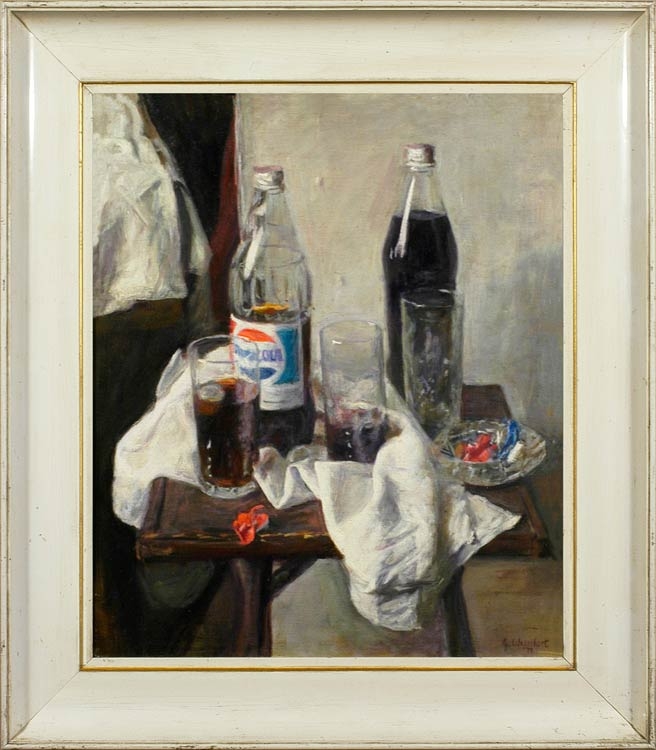 George Weissbort, In the studio: a break for Pepsi
George Weissbort, In the studio: a break for Pepsi
This piece by Weissbort echoes more traditionalist still life works, albeit portraying a plastic bottle and an ashtray of dogends rather than the more classical decanter and plate. There is an air that these things have been almost thrown there, placed carelessly rather than arranged, and thus they retain a sense of the motion that put them into their place.
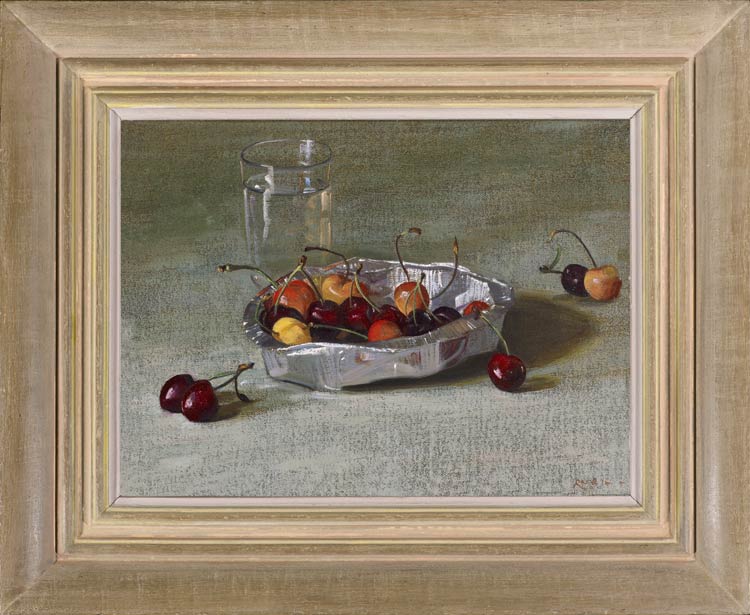 Stephen Rose, Cherries in a foil container with a glass
Stephen Rose, Cherries in a foil container with a glass
By contrast, in Stephen Rose’s Cherries in a foil container with a glass, the composition appears more constructed; set against an undefined background, it has less of a natural air. It is a perfectly static composition, with no hint even of motion in the glass of water. Yet still, there is evidence of motion in the battered foil container; this is clearly not an item that has always been at rest.
Whether the artist has chosen to portray stillness or motion in their composition, they create a moment frozen in time and pigments; a motion captured, or stillness preserved, for many years to come. Perhaps it is this aspect that offers the true beauty of a painting; that it creates a moment that you can always return to.


